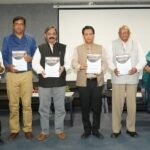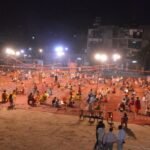
New Delhi, Apr 2 ,2025 – The Supreme Court on Tuesday instructed petitioners challenging the constitutional validity of various Hindu Religious Endowments laws in Tamil Nadu, Andhra Pradesh, Telangana, and the Union Territory of Puducherry to seek relief from the respective High Courts.
The petitions, some dating back to 2012, questioned the extent of government oversight over Hindu temples and religious institutions.
A bench comprising Justice B. V. Nagarathna and Justice Satish Chandra Sharma disposed of the petitions, including a writ plea filed by Swami Dayananda Saraswati and others, while allowing the petitioners to file fresh cases in the appropriate High Courts.
The Court highlighted that High Courts are better equipped to analyze the socio-cultural, economic, and religious aspects of the issue and suggested they may appoint expert committees for in-depth deliberations if required.
Justice Nagarathna remarked, “Temples were historically central to the economy, and they continue to play a crucial role. However, their management must be examined from multiple perspectives, not solely from a legal standpoint.”
Senior Advocate S. Guru Krishnakumar, representing the petitioners, contended that several provisions of state endowment laws were unconstitutional and imposed excessive governmental interference in temple administration.
He argued that these laws placed Hindu religious institutions under disproportionate state control while allowing other religious organizations greater autonomy. He also stressed that past Supreme Court rulings on similar matters warranted a uniform decision rather than fragmented state-wise verdicts.
However, Additional Solicitor General KM Natraj, representing the Centre and the Union Territory of Puducherry, opposed this view, asserting that religious endowment laws fell within state jurisdiction and should be addressed first by the respective High Courts. He noted that similar cases had been successfully reviewed at the state level, leading to amendments where necessary.
Solicitor General Tushar Mehta, appearing later, strongly opposed government control over temples.
He asserted, “If religion has no role in governance, then governance should have no role in religion. Temples are not government departments.”
He emphasized that the government’s involvement should be restricted to ensuring proper administration rather than direct interference in religious affairs.
Senior Advocate J. Sai Deepak, representing some of the petitioners, delivered a detailed argument against state intervention in temple management.
He claimed that state governments had taken control of temples under the guise of regulation but continued to divert temple funds for non-religious purposes.
He pointed out that certain provisions of these laws—some of which had been reintroduced despite being struck down in the Shirur Mutt case—unfairly restricted Hindu temples while leaving other religious institutions untouched.
Sai Deepak also rejected the notion that temples were “public property,” asserting that they belonged to the devotee community and not the government.
During the proceedings, Justice Nagarathna acknowledged the historical role of temples in regional economies and cultural traditions.
She posed key questions about whether deregulating temple administration would benefit devotees. Responding, Sai Deepak argued, “Even today, the economy revolves around temples, but unfortunately, temples themselves suffer. Instead of serving the community, temple revenues are often misused by administrative bodies.”
At one point, Senior Advocate N. S. Nappinai, also representing the petitioners, highlighted that the challenges to these laws had been pending for over 16 years. “We have waited too long for a chance to present our case before the Supreme Court. Please grant us at least one day to make our submissions before transferring us to the High Courts,” she pleaded.
The Tamil Nadu government’s counsel, Senior Advocate Amit Anand Tiwari, refuted these claims, maintaining that temple funds were being properly managed and accounted for. He stated that the state had spent over ₹100 crores in the past year on temple restoration projects.
However, Sai Deepak countered, “After melting temple gold, the state now claims to be restoring temples. The cycle repeats with every new government, where politically appointed administrators misuse temple resources.”
After hearing all arguments, the Supreme Court ruled that the petitioners should first seek recourse at the High Court level, ensuring that each state’s unique legislative framework is adequately considered.
The bench observed that state endowment laws differed in nuances, and a single ruling might not be applicable across all regions.
The Court allowed petitioners to file fresh cases in their respective High Courts, where the matters could be examined in greater detail. It also left open the possibility for High Courts to constitute expert committees to assess the historical, religious, and socio-economic aspects of temple management.
This ruling reinforces the Supreme Court’s stance that fundamental questions regarding religious endowments and government intervention should be assessed on a case-by-case basis by jurisdictional courts before being brought before the apex court.
The verdict has reignited discussions on temple autonomy, with legal experts and religious scholars closely monitoring developments in the respective High Courts.
















No Comments: